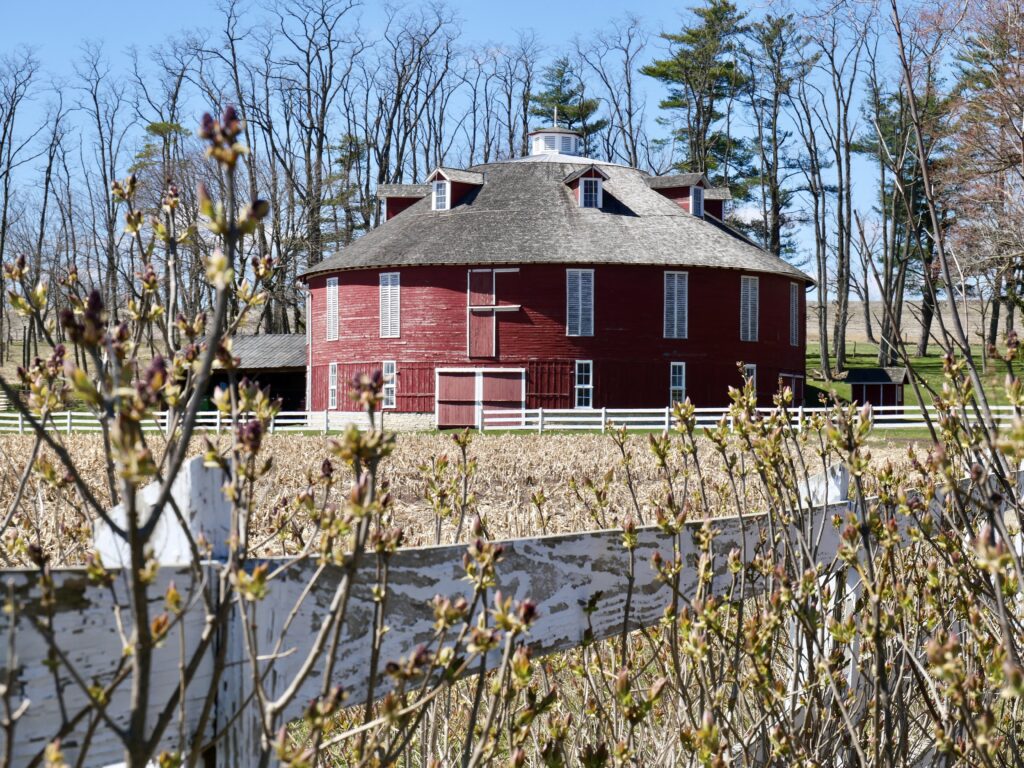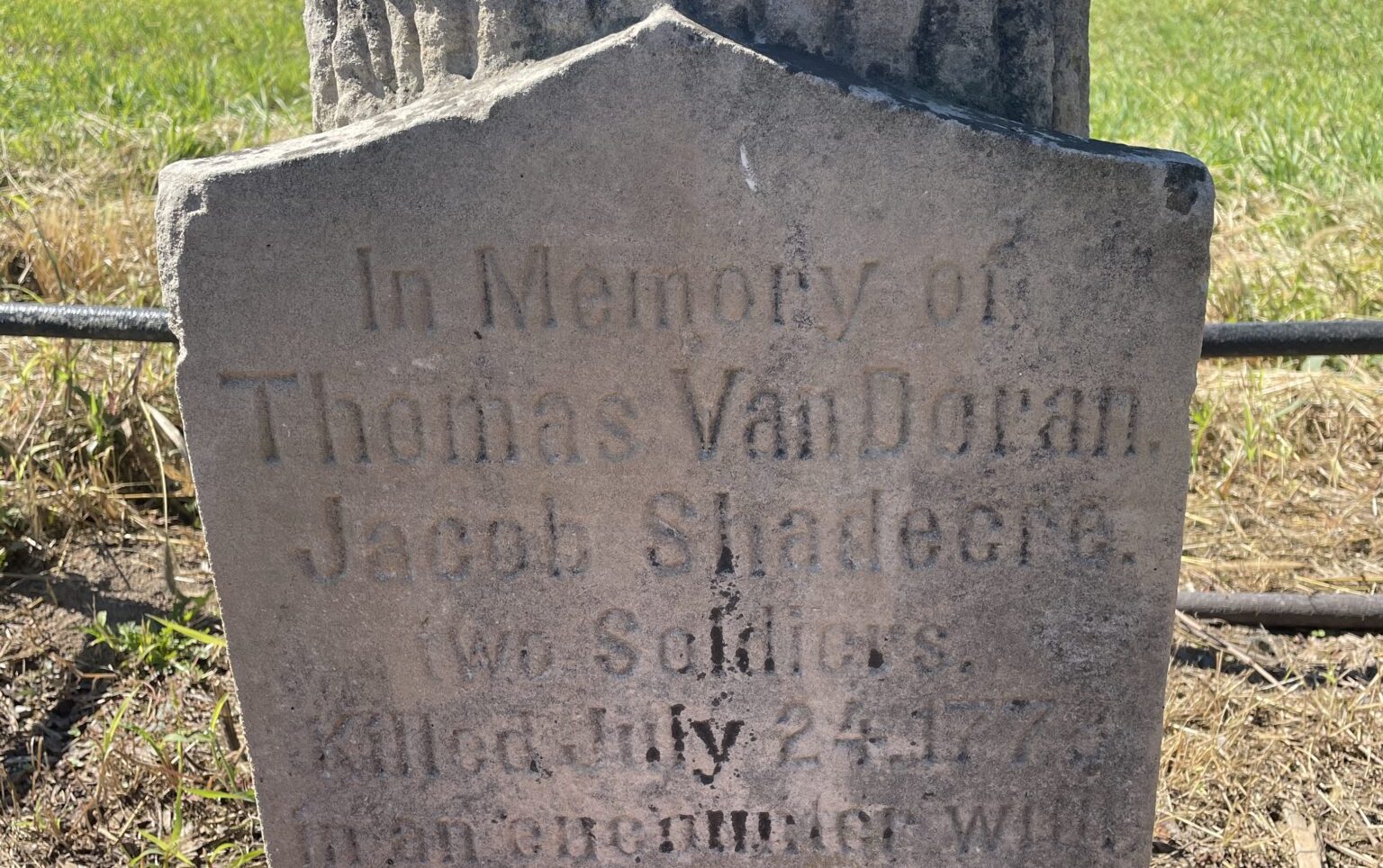Potter Township was founded 250 years ago. It is celebrated as Centre County’s oldest surviving township which still bears the same name. Back in 1774, it was part of Northumberland County and was much larger than it is today, even including Aaronsburg (now part of Haines Township). As the map of Pennsylvania unfolded westward, Centre County emerged from parts of Northumberland, Mifflin, Huntingdon and Lycoming counties by February of 1800.
Potter Township is named in honor of General James Potter, who emigrated from Ireland and served in both the French & Indian War and the American Revolution. When Potter first laid his eyes upon the Penns and Brush valleys sometime between 1756 and 1764, he famously declared from Mt. Nittany, “By heavens … I have discovered an empire.” James Potter would become one of the largest landholders in Pennsylvania. Places in central Pennsylvania and as far north as Potter County are also named for him.
The American Revolution commenced the year following Potter Township’s incorporation. In this chaotic context, some Native Americans allied themselves with the British. Potter’s Fort was built in 1777 as a refuge for early settlers in the area. On a country road off Route 45, the “Indian Lane” memorial stands in honor of two American Revolutionary War soldiers who were killed in action protecting farmers during the summer harvest of 1778. Five American Indians made their attack just a mile east of Potter’s Fort; the two soldiers engaged the group of warriors. The monument marks the location of this encounter and bears the names of Thomas VanDoran and Jacob Shadecre, who died in the line of duty. While forts have faded away here, farming has continued to thrive.

The Potter descendants also established Potters Mills along Sinking Creek and Potters Run. By 1817, the small village had five mills, a post office, store, tavern and several dwellings. From Lewistown, a pike meandered through Seven Mountains into Potter Township (Old Fort Road), passing through Earlysburg (Earlystown). Earlystown’s original structures, like its stage-stop hotel, are lost. The ghost town would have been in the area of the intersection known as Old Fort.
In 1818, one could also take a stagecoach from Northumberland into Potter Township from a more east to west route, along modern-day Route 45 from Lewisburg. Leaving from Northumberland on a Friday morning, you would stay the night in Aaronsburg and make Bellefonte by 4 p.m. on Saturday. The stagecoach journey would stop at five taverns, take about a day and a half and cost a rider $4.50 one way.
Native American trails, like the Kishacoquillas Path into the region, were the foundations of modern roads today. As access improved, so did settlement. By the mid-1800s, more folks settled these valleys, including German populations who were reaping the harvests. Like the pristine creeks, the farms and valleys found their places in between the mountain ridges. And where you have grain and feed, you’re likely to find mills. Potter Township and its neighbors had plenty.
Agriculture is the bread and butter of these valleys, and local granges or farmer’s associations were established to improve their way of life. In 1874, the first “Granger’s pic-nik” was held for local granges near Centre Hall. The picnic was an opportunity for recreation and also education on the advancements of agriculture. The Grange Encampment and fair has certainly preserved and advanced a great deal for this county and is one of the last, if not the last, remaining tenting fair in the United States.
By the 1880s, the Lewisburg & Tyrone Railroad extended the reach of Penns Valley to more distant markets. The railroad days have passed by, but locals keep the era of steam alive at the Nittany Antique Machinery Association shows.
While Potter Township has changed over the years, its consistent connection to agriculture has shaped its core identity. Folks might drive the roads at faster speeds, but don’t forget to slow down and take in sights like Neff Round Barn, built in 1910 along Earlystown Road. Next time you’re watching a tractor pull at the Grange Fair, think of how much time and effort it took to enjoy the harvests of Potter Township’s heritage.
The township’s Heritage Day will be on Saturday, June 8, with events all day to celebrate its 250th (semiquincentennial) anniversary. The event will feature historical bus tours, face painting, bounce houses, a hay maze, food and drinks by Centre Hall Fire Co. and Potter Township, cakes by Delectable Delights and live music by local artists. It will also include an Uncovering Potter Township Game Show and a Campfire Ghost Tales, both hosted by published author, archivist of folktales and Centre Hall native Jeffrey R. Frazier. T&G
Local Historia is a passion for local history, community and preservation. Its mission is to connect you with local history through engaging content and walking tours. Local Historia is owned by public historians Matt Maris and Dustin Elder, who co-author this column. For more, visit localhistoria.com.
Sources:
Centre County Encyclopedia of History & Culture. Centre County Historical Society. centrehistory.org
Hudson and Morrison. A Map of Centre County (ca. 1817). PHMC Whiteside Maps. https://www.phmc.state.pa.us/bah/dam/rg/di/r17-534WhitesideMaps/r017_0534_0000_3352_CentreCounty.pdf
Linn, J. B. (1883). History of Centre and Clinton Counties, Pennsylvania (p.20). https://archive.org/details/historyofcentrec00linn/page/20/
“Northumberland and Bellefonte Mail Stage.” Bellefonte Patriot (Bellefonte, PA). July 27, 1818. https://panewsarchive.psu.edu/lccn/sn83031986/1818-07-27/ed-1/seq-1/
Other facts from Heritage Day: Potter Township’s 250th Anniversary Facebook page.



